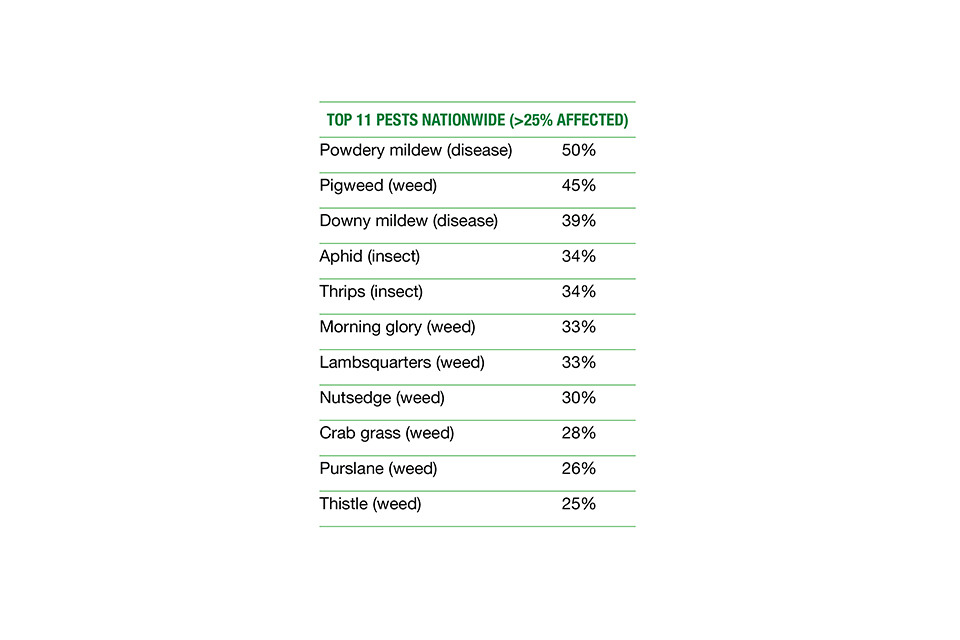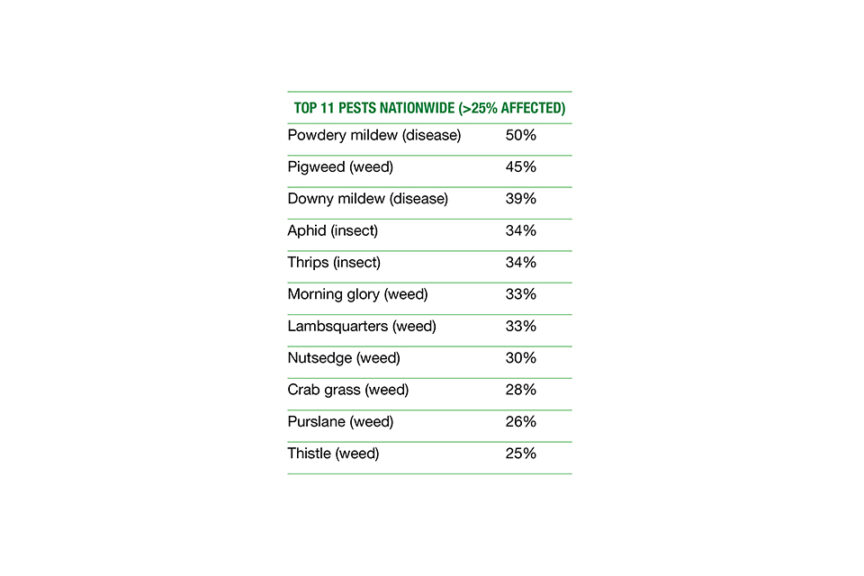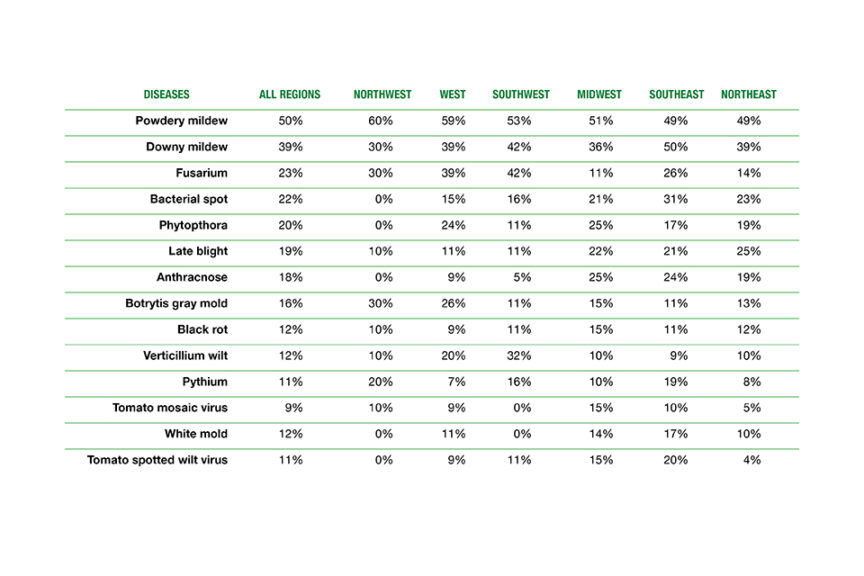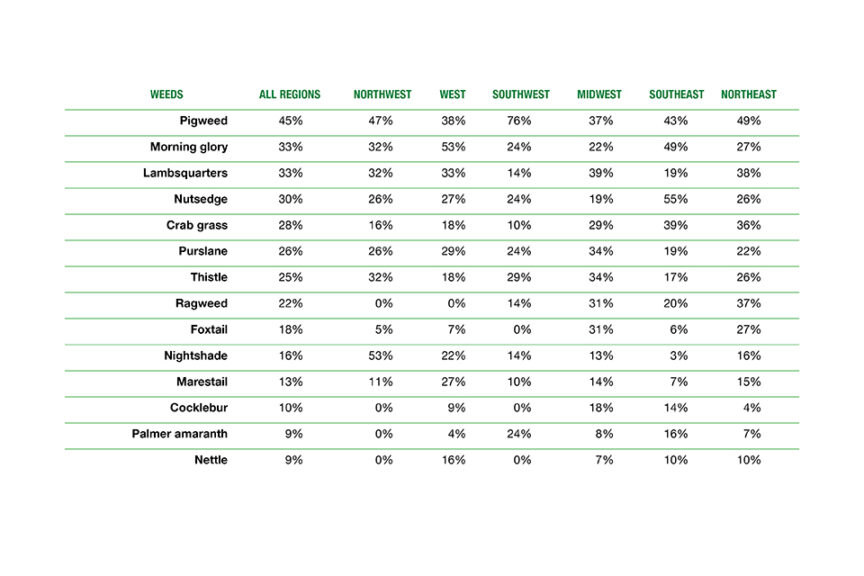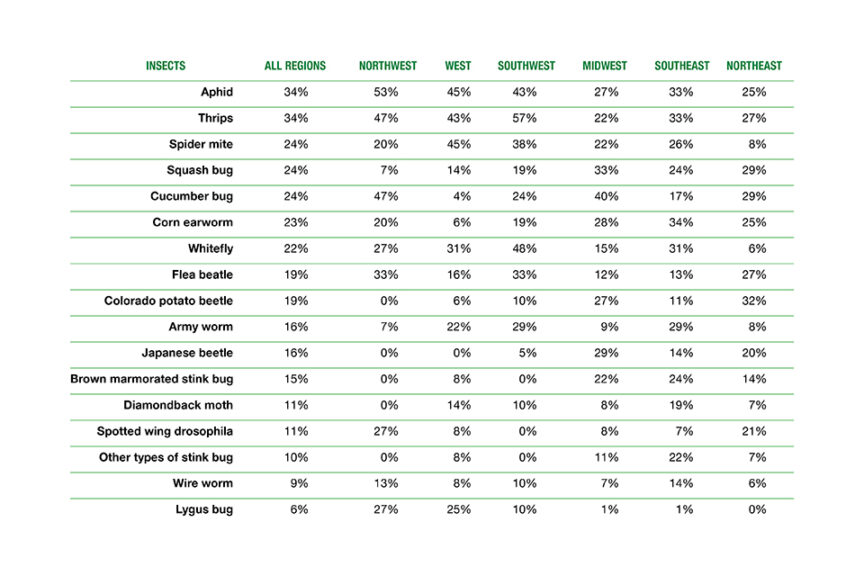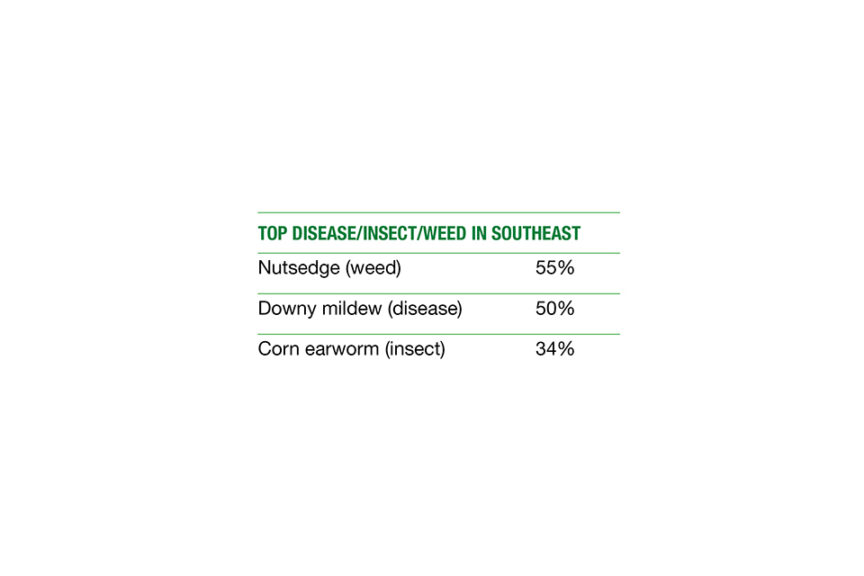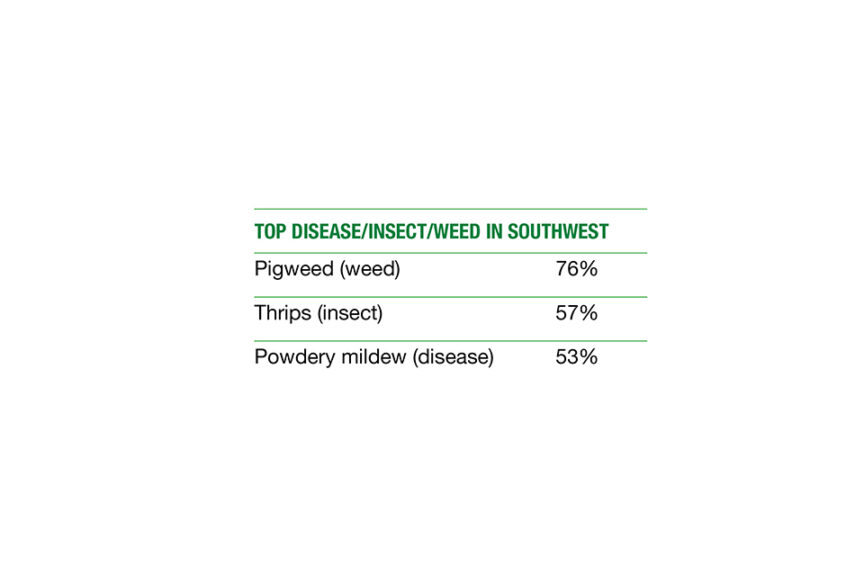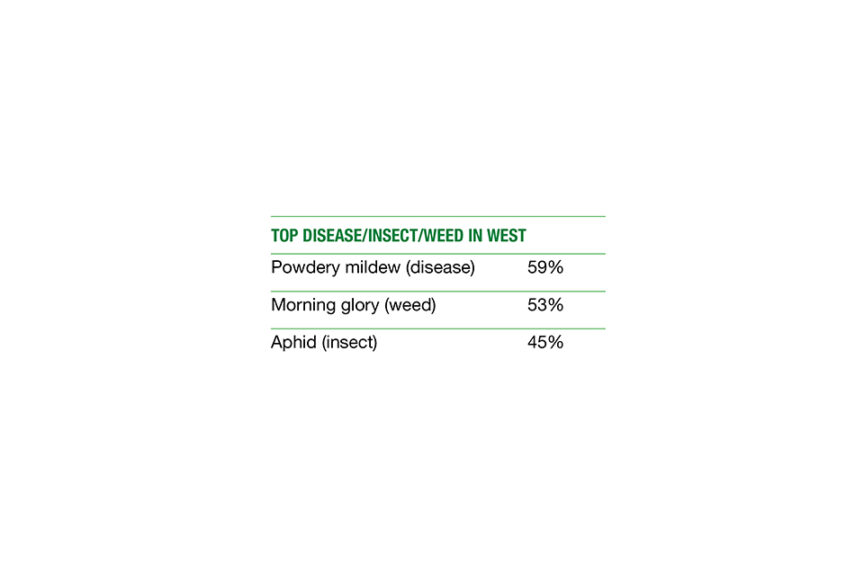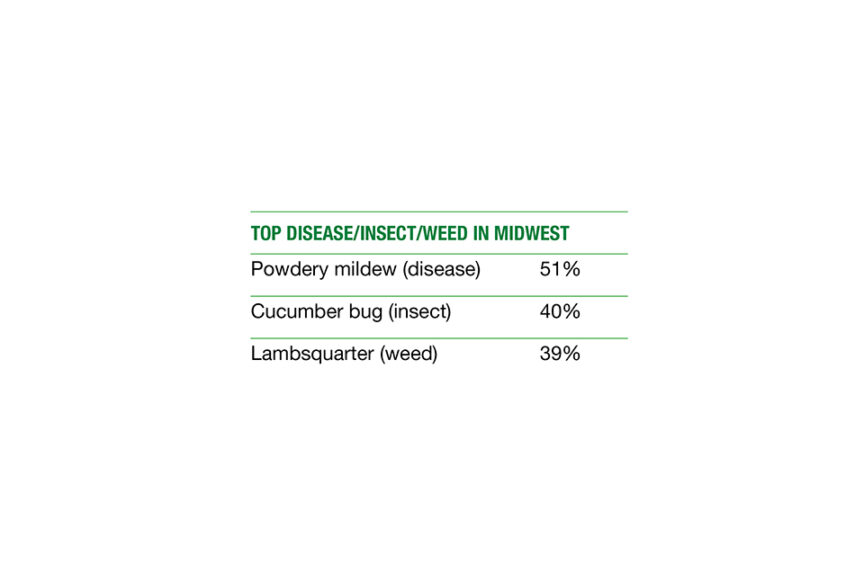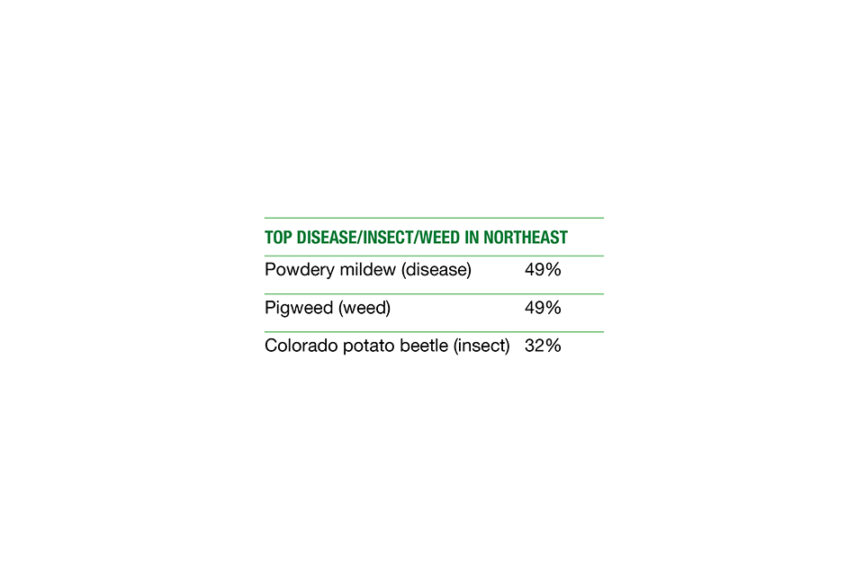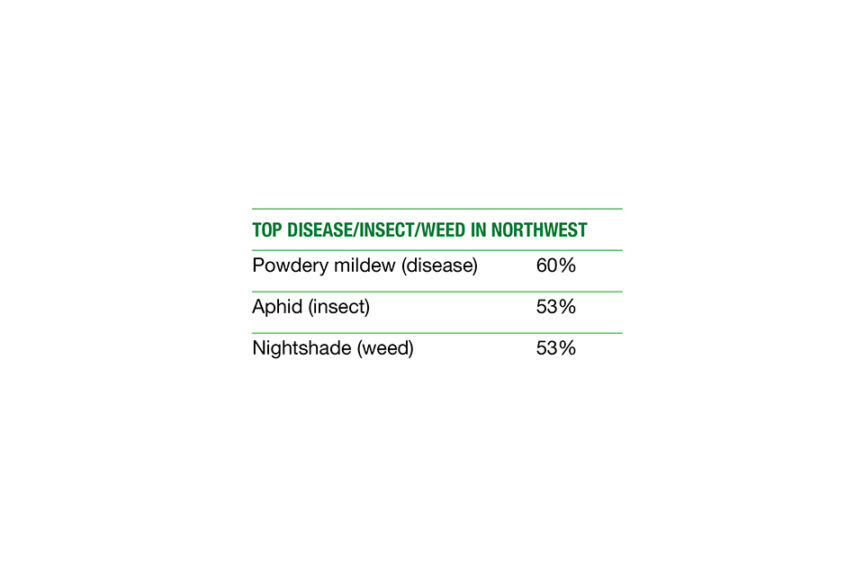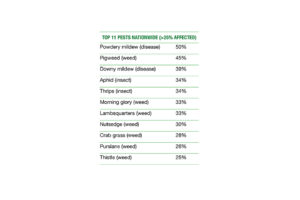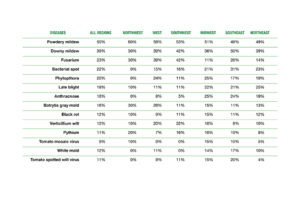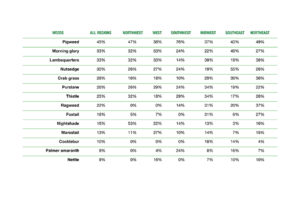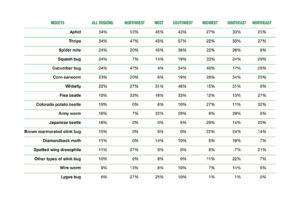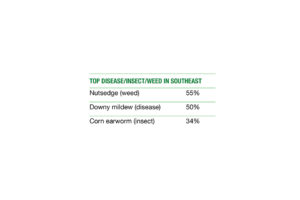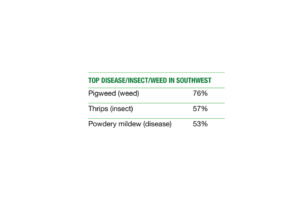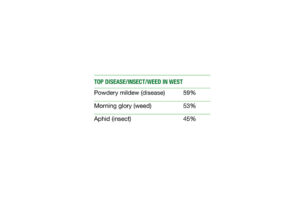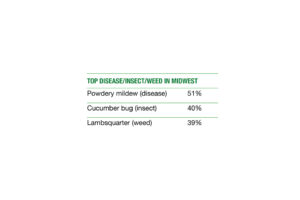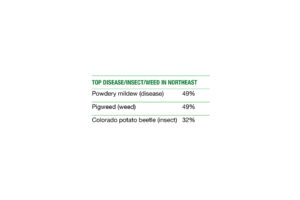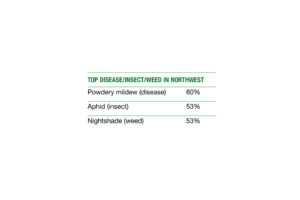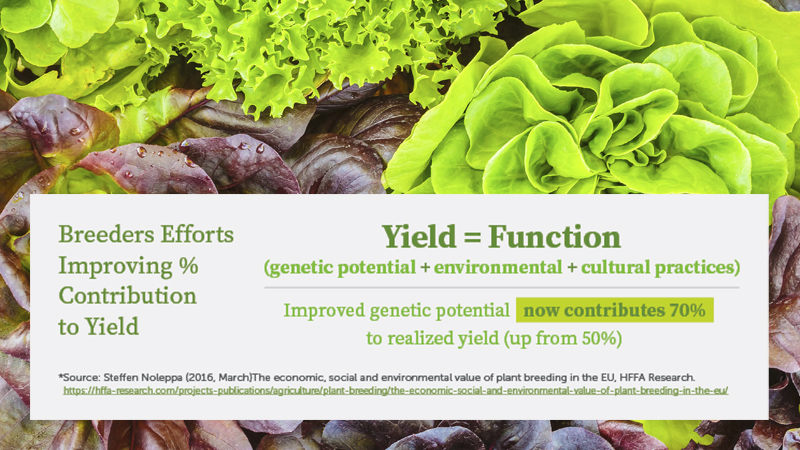Powdery Mildew, Pigweed Most Prevalent Pests for Vegetable Growers Right Now
From coast to coast and border to border, no pest — disease, insect, or weed — plagued U.S. vegetable growers more in 2021 than powdery mildew.
The plant disease affected exactly half of the 300-plus respondents to American Vegetable Grower‘s 2022 State of the Vegetable Industry survey.
Across five of six U.S. regions, no disease was more significant than powdery mildew. The exception was the Southeast, where downy mildew topped powdery mildew by one percentage point (50% to 49%).
Downy mildew, at 39% overall, was the other disease to affect more than a quarter of the country’s vegetable growers. Rounding out the top five diseases overall were fusarium (23%), bacterial spot (22%), and phytophthora (20%)
“You always have to stay on top of phytophthora and downy in our area, or you might as well not even grow,” an Ohio farmer says.
Up in Minnesota, battling disease came easier. “There was little disease pressure with the dry weather,” a grower there says.
Losing Battle
Weeds dominated the list of pests that affected at least 25% of the country. As one New Hampshire grower says after singling out 10 different examples, “It was a great year for weeds.”
Another grower, from Florida, responds “all of the above” after checking off most of the prevalent weeds in the reader survey.
Pigweed placed second to powdery mildew among all pest types, affecting 45% of the country. It thrived in the Southwest and Northeast.
Also troubling were morning glory (33%), lambsquarters (33%), nutsedge (30%), crab grass (28%), purslane (26%), and thistle (25%).
“Morning glory was more intense than ever,” a Georgia grower says.
The Ohio grower laments the presence of lambsquarters (the top weed in the Midwest), marestail, ragweed, and thistle. “We upped our rates on everything, and it worked well, but those four are always a pain,” he says.
The Minnesota grower, meanwhile, regrets the current state of herbicide resistance. “We’re changing to cover cropping and adding sheep to graze weeds,” he says.
Aphid, Thrips Infestations
Two of the top five pests overall were insects. Aphids and thrips tied for fourth overall at 34%.
“Thrips on organic leeks was a huge problem,” a Washington state grower says.
A Massachusetts grower cites potato aphids on his greenhouse tomatoes.
Spotted wing drosophila, while ranked only No. 14 among all insects across the U.S., still affected 27% of the Pacific Northwest and 21% of the Northeast.
“All other pests have been relatively well managed organically,” a Maryland growers says. “More work is needed for drosophila. I experiment on my own as well with botanicals.”
While a heavy infestation of army worms affected a Wisconsin grower, the going was not as difficult in Maine.
“There were no insect problems we were unable to handle,” the Maine grower says.





